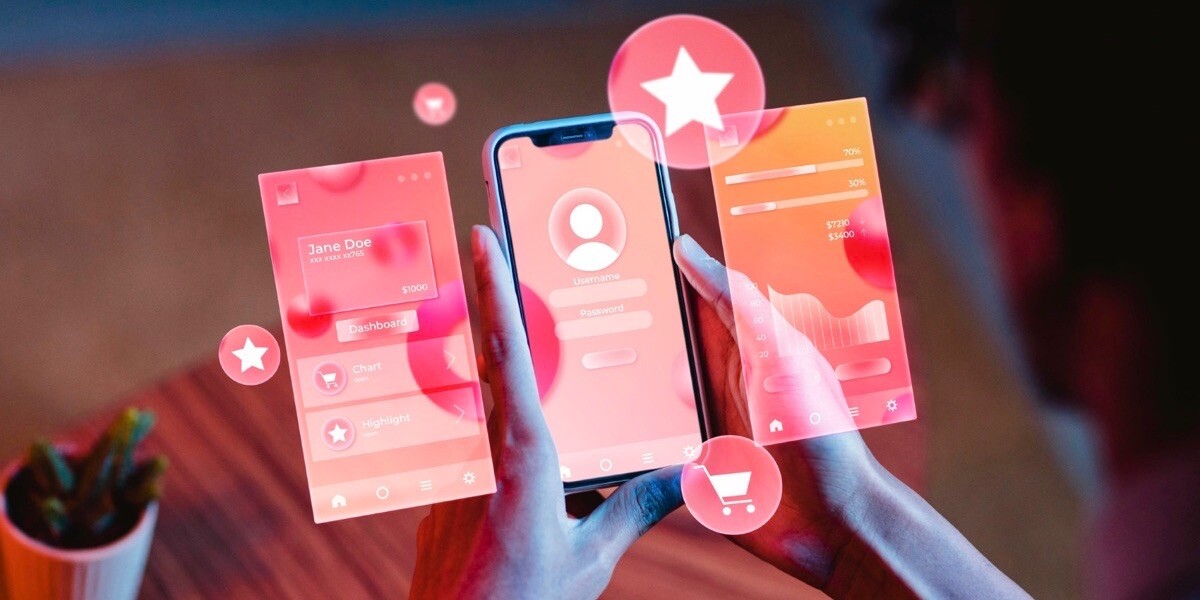
If You Go Mobile, You Must Go Feed
As our digital environment moves from desktop to mobile, the way we consume content changes accordingly. Companies that are winning in today’s mobile age are revealing a simple truth: if you want to go mobile, you must go feed.
Desktop UI ≠ Mobile UI
Our experience on desktop and mobile is not the same as the devices are intrinsically different. Sure, we use our laptops as serious grown-ups at work and then transform into members of the selfie generation on our phones, but the differences go beyond functionality. While our desktop benefits from a large amount of real estate on the screen, our phone screens are much smaller and thus you can see a lot less information at once. We also hold our phones in vertical mode, while our desktops have a landscape orientation. This alters the page layout, pushing content below the fold, and triggering us to scroll down on our touch-friendly mobile devices to navigate the web. Mobile is simply not suited to mirror the desktop browsing experience – users shouldn’t have to use their fingers to expand otherwise unreadable and cluttered text on their mobile screens. As we move towards a mobile-first world – in 2017, mobile internet usage overtook desktop internet usage globally – user experience is more important than ever on our phones, and companies that are getting it right are exhibiting a common trait: a feed experience.
Feed is Born for Mobile
A feed experience occurs when a user scrolls through a single column of content, be it text-, photo-, or video-based. Only the really early Facebook adopters might recall that before the News Feed was introduced in 2006, users would only get a list of personal notifications when they signed into their account. By creating a central and personalized hub of content that included the latest news from your friends and social groups, FB introduced a new and easy way of getting your daily dose of true, or fake news. As more social media apps like Instagram and Twitter adopted a feed-style interface, they were indicating that mobile should be experienced in its own unique way and that mobile sites and apps are not just smaller versions of regular desktop websites. Today, mobile represents 65% of digital media time, and this trend can be largely attributed to social media apps which format information in a way that is designed to keep their users entertained – and their thumbs nicely toned.
What Makes a Feed-Style Interface Attractive on Mobile?
So what is so attractive about a feed-style interface on mobile? A feed encourages users to scroll to discover more exciting content – and while you probably ditched your workout today, your thumb was still running a 5K. People spend more time on mobile apps reading articles and consuming videos simply because the intuitive design and presentation of media facilitates, and drives, user engagement. A feed is also optimized for speed: scrolling is fast, minimizes the time and deliberation process associated with clicking, and decreases the occurrence of slow-loading pages that may otherwise break user attention. This is especially important as mobile is built for an on-the-go, rather than static environment. Additionally, feeds have the good content architecture for applying filters that allow for personalization, individualizing the experience and increasing the chance that a user sticks around.
The Rise of the Feed Architecture
Scrolling through an infinite feed of information has become a natural and even inevitable activity, and one that we enjoy. Not only do feeds provide a good user experience, but it has many benefits for companies implementing it, such as increased discoverability of and engagement with content.
Adoption by Tech Giants
While spearheaded by social media, the feed architecture is being adopted by tech giants that recognize its value. Google recently introduced its own feed, a personalized stream of news articles and videos, to its Google app on Android and iOS. It also plans to implement the feed on google.com, which will mark a radical change from its long-standing homepage that includes the company’s logo and a search bar. Meanwhile, Amazon added “Amazon Spark” an Instagram-inspired feed-style interface of stories and photos, to its mobile app. This new feature is specifically designed for mobile and like the other feeds, is completely personalized to the user, in this case, the shopper. These moves signal a very important reality: as mobile becomes our primary device, publishers and brands need to take into account how we like to discover and absorb content.
Video Adopts Feed Style
As a result of this natural tendency to scroll on our smartphones, the feed experience has transcended beyond photos and articles to include a very important activity on mobile: watching video.
Shift to Mobile Video Consumption
As video consumption shifts massively to mobile, social media platforms are harnessing this trend and adapting video for a feed-style delivery. When users click on videos embedded on homepages, they enter a video feed experience, where they can scroll through an array of videos sequentially. This increases the discovery of more video content – like endless sport videos and food recipes we will never make – the number of video plays, and even completion rates, as data enables the video experience to be personalized, and therefore relevant, to each user.
Future of Video Feed Experience
While today the video feed experience is only widely used on social platforms, over time, we can expect its adoption on the open web. For media companies capitalizing on the growth of video and focusing their efforts on this medium, the mobile video feed experience presents a huge opportunity. By adopting the feed on their owned and operated mobile properties, publishers will likewise be able to deliver an experience that better engages and enriches their readers, viewers and listeners.
That’s why if you go mobile, you must go feed.

